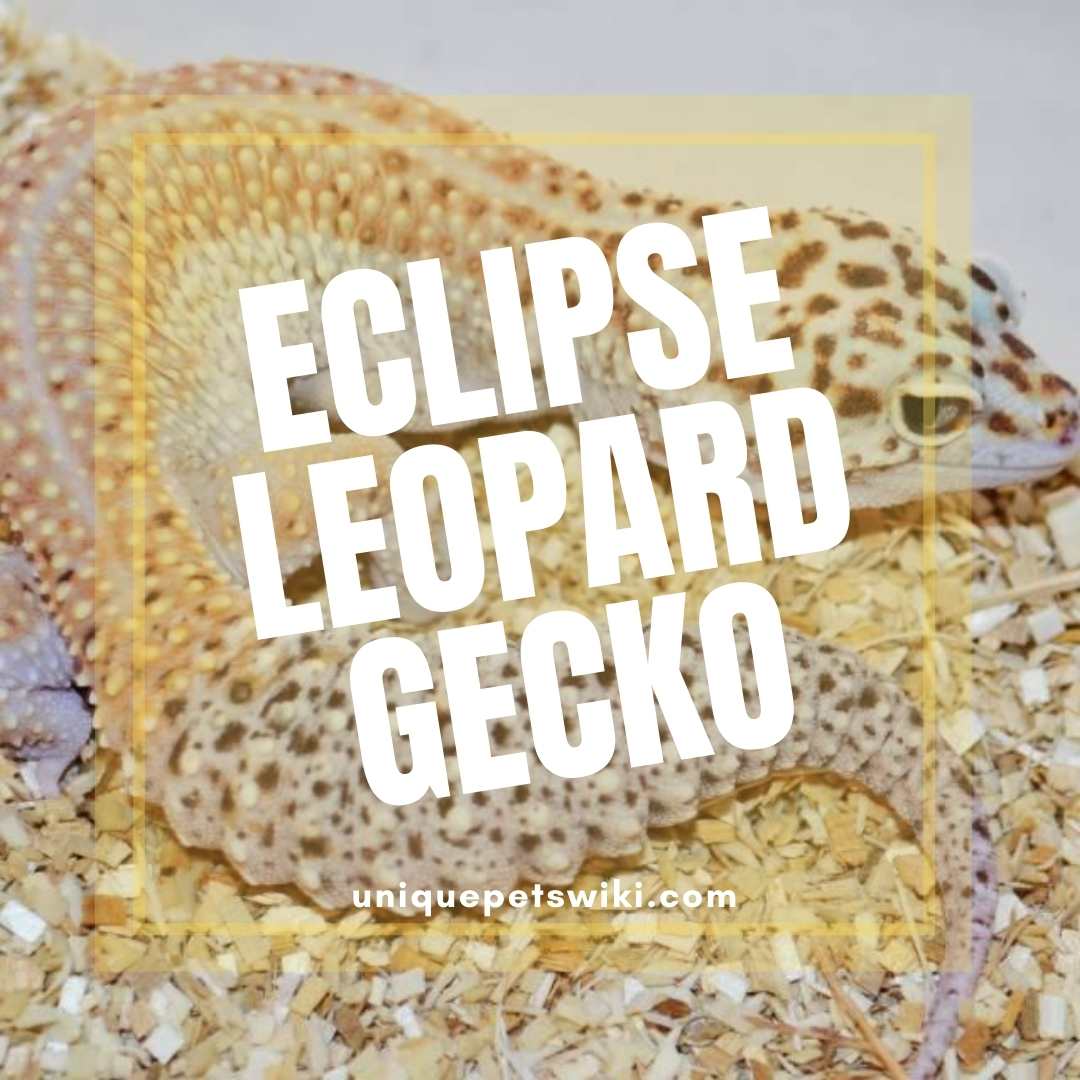What is the Eclipse Leopard Gecko that reptile pet lovers are discussing? As a pet lover, this article will inform you all about this fantastic pet. When you decide to keep a reptile pet, you have to start scratching your head on your needs’ best option.
Searching through the internet may feel like a maze with incomplete links, and this article provides a one-stop for all you want to know about this adorable gecko.
It will eliminate the uncertainties surrounding the eclipse leopard gecko in comparison to other geckos. The aim here is to furnish you with accurate, unbiased, and updated information about the eclipse leopard gecko.
You will learn whether you can keep an eclipse leopard gecko as a pet, how much it may cost you, what it eats, how to identify it, and the necessary accessories for keeping one, among others.
Contents
What is the Eclipse Leopard Gecko?
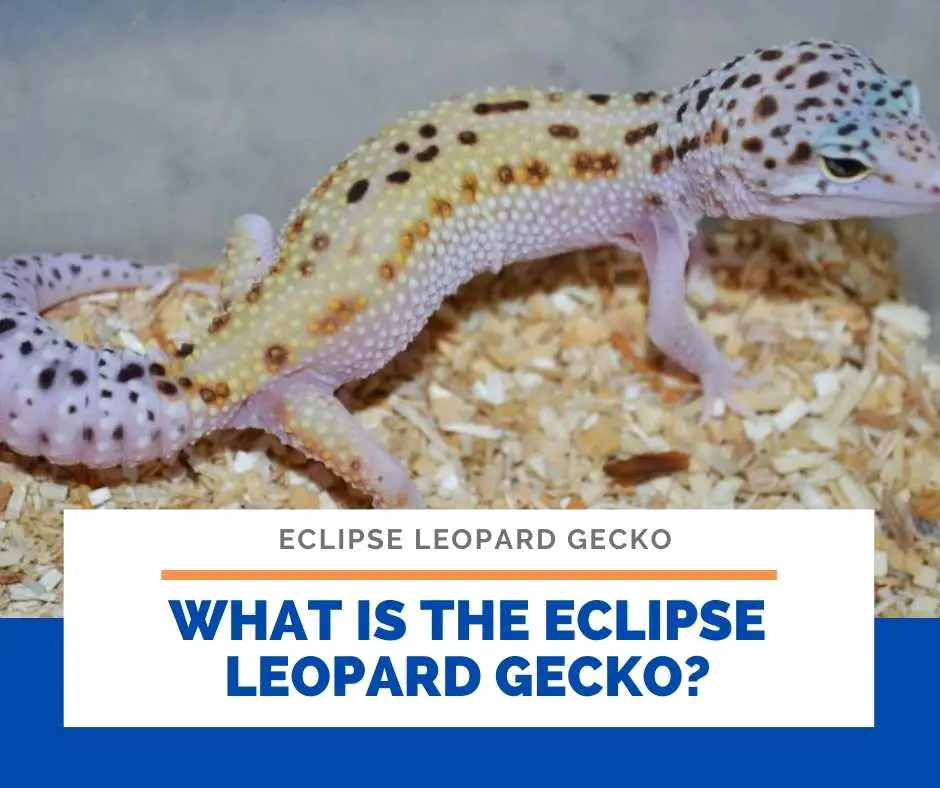
The eclipse is a morph of the leopard gecko discovered in 2004 following random breeding. It exhibits unique solid black eyes, and it was later confirmed to be a recessive trait.
This trait makes it a popular and valuable gecko for breeders in the development of designer morphs. It has the potential to alter eye coloration.
There are no records of the eclipse leopard gecko in the wild. That does not mean that it cannot occur naturally, but it would require the same conditions in the captive breeding to recur. Leopard geckos are found naturally in Pakistan, Afghanistan, and northwestern India.
The identification guide for Eclipse Leopard Gecko
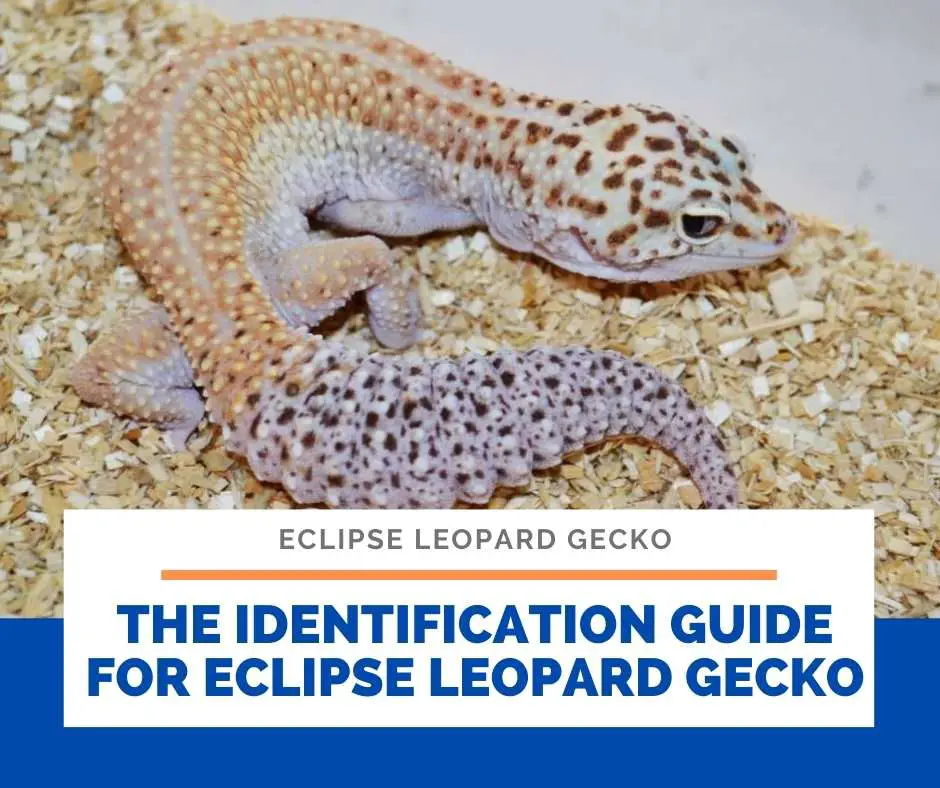
The leopard gecko family comes in multiple morphs. Identifying the eclipse morph is not difficult thanks to its unique black eyes and patternless stripes.
The patternless stripes may be confusing for beginners. High white markings are typical on the nose, feet, and tail.
They may also appear on the neck and body. Do not confuse the eclipse with the pied geckos as some sellers market them to be. They are calm and easy to handle, which adds to their suitability for beginner pet keepers.
In essence, the eyes are the unique aspects that you want to assess when identifying an eclipse leopard gecko. The amount of extra colored pigment in their pupils may vary.
They may have snake eyes, which means that the eye pigment is not entirely black, but it has extra pigment emerging from the pupil. Some of them may express with marbled eyes.
Can I have an Eclipse Leopard Gecko as a pet?
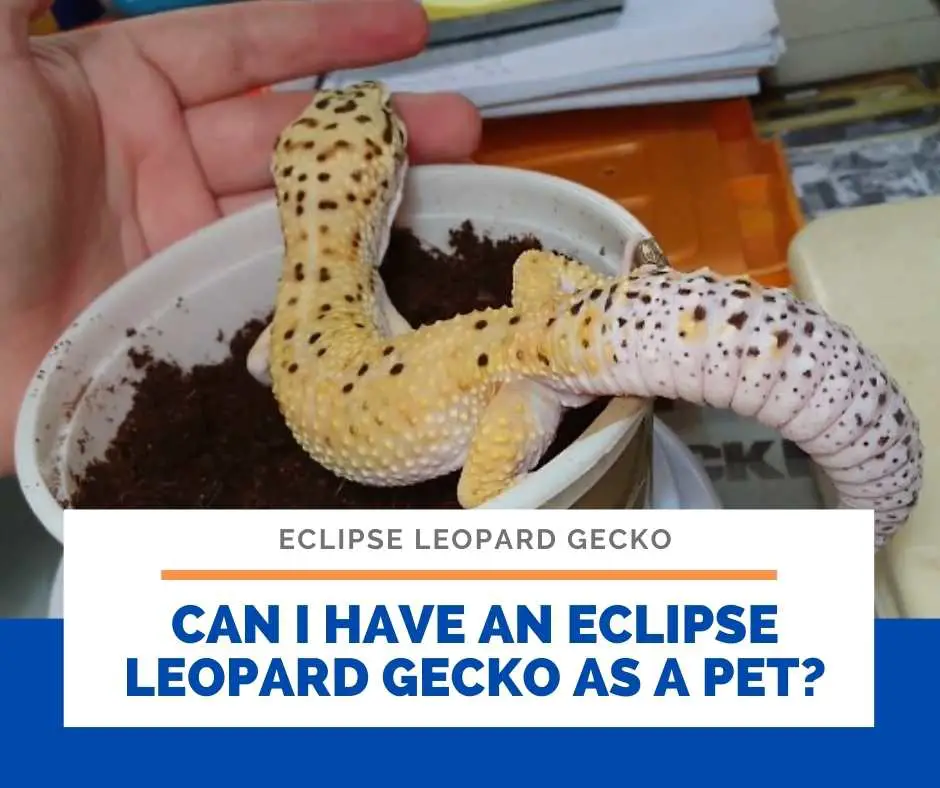
The simple answer is yes; you can have the eclipse leopard gecko as a pet. Before buying a reptile pet, please confirm with relevant authorities on relevant rules and regulations regarding keeping them as pets.
You can buy an eclipse leopard gecko in most physical and online pet stores. We recommend that you buy from a store that deals with captive-bred breeds from our extensive research and experience.
These pets cope easily with life in captivity, and you can trace their history with ease.
How much is an Eclipse leopard gecko? The price for an Eclipse leopard gecko will vary based on size, age, sex, and other characteristics. In general, average price range of the eclipse leopard gecko is between $50.00 and $400.00. Most of the prices that you will find online are base prices.
It means that you will also pay for any taxes and shipping fees required. When budgeting to buy the pet, you also need to remember the necessary accessories to keep it.
What are the Needed Accessories to Own a Leopard Gecko?
There are a few things that you need to have in place for the comfort of your leopard gecko. The essential elements to consider in this area include the housing, environment, and feeding.
Housing and Environment
Vivarium
Your pet eclipse leopard gecko needs a comfortable housing. It can be as elaborate or plain as you feel comfortable. A contico box or a plastic box measuring 16in by 11in can be comfortable for a juvenile or a small adult.
In the end, you will want to upgrade to a bigger housing and 36in by 18in by 18in is adequate to hold up to three adult geckos comfortably. The height aspect is necessary if you intend to add lighting.
Note: Do not house two adult males together because they are territorial and will fight for dominance. Sometimes they fight to the death.
Hides
The leopard geckos enjoy hiding, and the lack of a hiding place may stress them. You can work with available materials, such as coconut shells, stones, or purchase a cave for them to hide.
Moist Box
A moist box is necessary when the gecko is shedding its skin. You can incorporate the moist box into the hide. Leopard geckos commonly eat their skin after shedding. Do not be surprised if this happens.
Heating and Lighting
The leopard geckos need an external heat source for their body function regulation. Heat also aids in the pet’s digestion process. Since they absorb the heat using their underside, a heat mat placed under the substrate or vivarium is an ideal heat source.
The heat source should cover between ⅓ and ½ of the enclosure’s bottom side. Ensure that the temperature of the area where the gecko basks is between 84 and 88 degrees Fahrenheit (28.9 – 31.1 degrees celsius).
Leopard geckos do not require any special or artificial lighting, such as UV light. Access to natural light is essential for them to differentiate day-time from night-time. The light can also help in heating the enclosure.
Humidity
You should aim for a relative humidity of approximately 40-60%.
Substrate
Selecting the substrate is important as some varieties may cause impaction. Some good substrates, such as the excavator clay, allows you and the gecko to form burrows.
Paper towels and stone slates also form excellent substrates. Some other suitable substrates include reptile carpet, ceramic tiles, coconut fiber, and large river pebbles.
You should avoid using sand, quartz, crushed walnut shells, wood chippings, bark and forest substrates, and sharp items. The main problem with these options is the potential for impaction when swallowed, and it may be fatal.
What do Leopard Geckos Eat?
Food
Your pet leopard gecko needs food and supplements to maintain its health. You should feed them insects, and the best options are:
- Mealworms
- Crickets
They can also eat:
- Tomato hornworms
- Beetles
- Silkworms
- Butter worms
- Cockroaches
- Superworms
- Waxworms
Superworms and waxworms should be treats only eaten occasionally due to their high-fat content.
Avoid random insects caught in the backyard as they may make your gecko sick. You should consider buying food from pet shops for safety reasons.
Note: All the feeder insects need gut loading at least 24 hours before feeding. Gut loading is an essential process of passing vital nutrients, minerals, and micronutrients to your pet.
Supplements
Your pet also needs calcium supplements that come with vitamin D3. Calcium is essential in building strong bones, forming eggshells, controlling muscle activity, and sending nerve impulses. Vitamin D3 assists in the absorption of calcium.
Adding calcium supplements is important because most of the insects that the pet gecko eats are low in calcium. Your leopard gecko will also gain from amino acid and multivitamin supplements.
If your leopard gecko does not receive enough calcium, it will draw the required calcium from its bones, and this may lead to metabolic bone disease (MBD), whose changes can be irreversible.
The insectivorous nature of your leopard gecko also means that it may not convert carotene to Vitamin A. As such, you also need to give it Vitamin A (retinol) supplement instead of beta carotene.
Water
Your leopard gecko will drink water readily from a dish. So, you need to provide fresh and clean water in the enclosure at all times. You should use a heavy ceramic water bowl to avoid spillage.
However, avoid deep bowls where your gecko may drown. In case the water spills or splashes, clean it as soon as possible. Always use tap water if it is ideal for human consumption in your area.
Facts of Eclipse Leopard Gecko
| Expertise Level | Beginner |
| Diurnal or Nocturnal | Nocturnal |
| Size | Hatchlings 3 to 4 inches longAdult female 7 to 8 inches longAdult male 8 to 10 inches long |
| UVB Light | No |
| Price | $50 – $400 |
| Lifespan | 6 to 20 years |
| Relative Humidity | 40-60% |
| Temperature | 84-90 degrees Fahrenheit |
| Diet | Live insects |
| Shedding | Yes |
| Reproduction | Egg-laying |
Common Health Issues of a Leopard Gecko?
You need to know about the symptoms and health issues that your pet leopard gecko may have. While there are a few health issues to worry about, please note that the leopard gecko is one of the healthiest lizards that you can own.
The fact that these pets can live up to 20 years shows that they are able to cope with health problems. Even though that is the case, you still need to be on the checkout for potential health issues.
If you see some of these issues, your leopard gecko could be having health problems:
- Lack of alertness when you handle it. If they look like they are in a daze or not paying attention to their surroundings.
- Loss of tail thickness. If the tail thickness reduces, it means the gecko could be sick or about to get sick. In case it drops the tail when living with another gecko, it might be getting bullied.
- Noticing their bony structure through their skin. It shows excess weight loss.
- Skin discoloration outside their shedding time. Or they have blisters or open cuts.
- Draining out of their mouth, loose jaw bone, or a gaping mouth.
- Swelling or bleeding toes and loss of toes.
- Diarrhea and different colored feces. Their droppings should always be brown, black, and a little white.
Leopard Gecko Health Problems and Illnesses include:
Impaction
Impaction is one of the most common problems and might become fatal if untreated. It results from the gecko eating its substrate. You must avoid sand and such small substrates that the gecko can swallow.
Impaction may also result from your snake eating food that is too big. The leading cause is that they are unable to digest the food.
Prolapse
You need to know about this health issue because it can be fatal. You will notice a vent protruding under the tail. In case you see such, you should consult a vet immediately.
Metabolic Bone Disease (MBD)
This disease expresses through difficulty walking. If your pet leopard gecko has the problem, you will notice that the limbs become rubbery. In some cases, the limbs may appear broken.
MBD is a severe disease even for the owner, and it happens due to calcium deficiency. Unfortunately, it has no cure, so you need to ensure that your leopard gecko gets calcium supplements to avoid it.
Egg Binding (Dystocia)
Egg binding is a problem that your pet gecko may experience when eggs do not leave the body when it’s time to lay. It mainly results from inadequate calcium in the diet. You may notice difficulty laying eggs.
The leopard gecko may also express signs of depression, restlessness, or lack of appetite. If not handled early, it may even turn fatal.
Parasites
Parasites present a common health problem with geckos, and you will only notice signs when the parasite has been in the body for long. You can know whether it has parasites through getting a vet to test the feces.. Medicine is available to deal with the problem.
Burns
Burns can happen when your leopard gecko rests on heated surfaces within its enclosure. It can be a fatal problem, and if you notice burns, you must take the pet to a vet.
Ensure your enclosure set up is safe for the pet, and it does not exceed the required temperature. The lizard should not have direct contact with the heat sources. Note that even light within the enclosure can get hot.
Wrapping Up
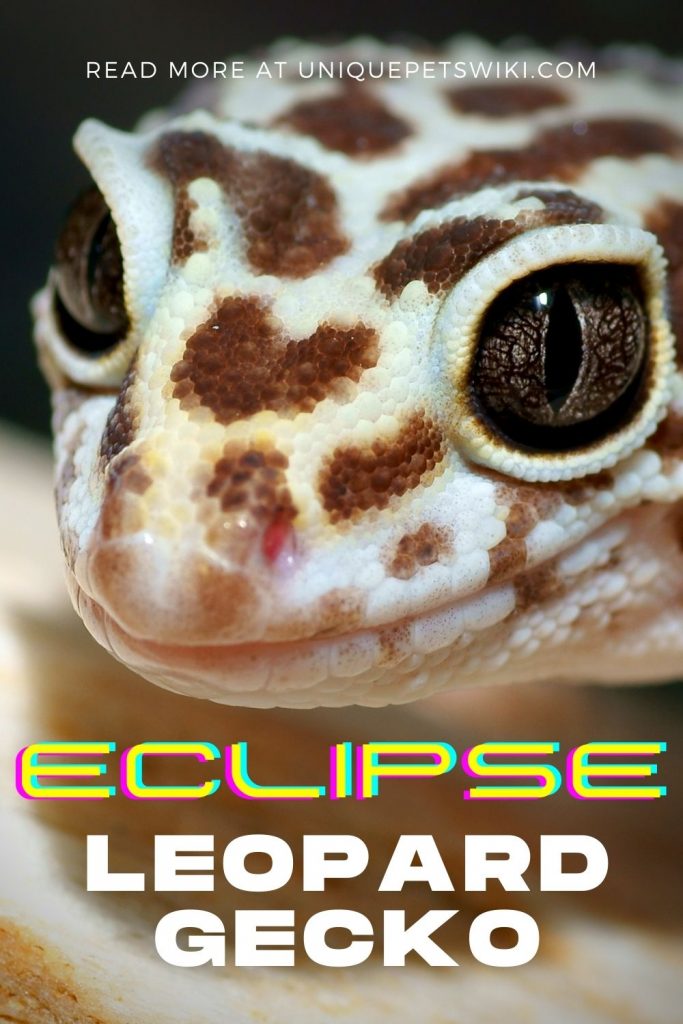
The eclipse leopard gecko is one of the best reptile pets that you keep. They are easy to maintain, and their long life means that you will enjoy having them even longer.
As with other pets, you need to prepare an enclosure for your pet according to its needs. You must also ensure that its health and wellness is maintained.
When you follow the simple handling and precautionary measure, you will enjoy having this leopard gecko morph for long.
